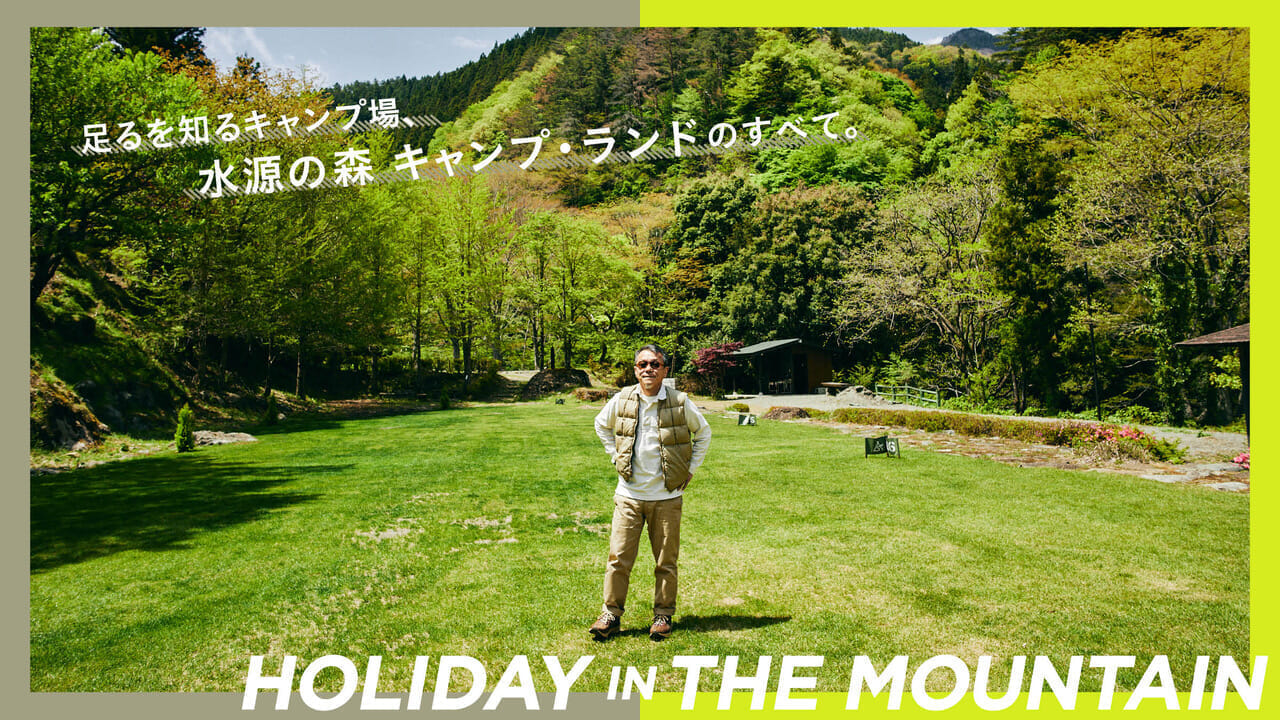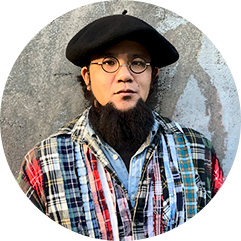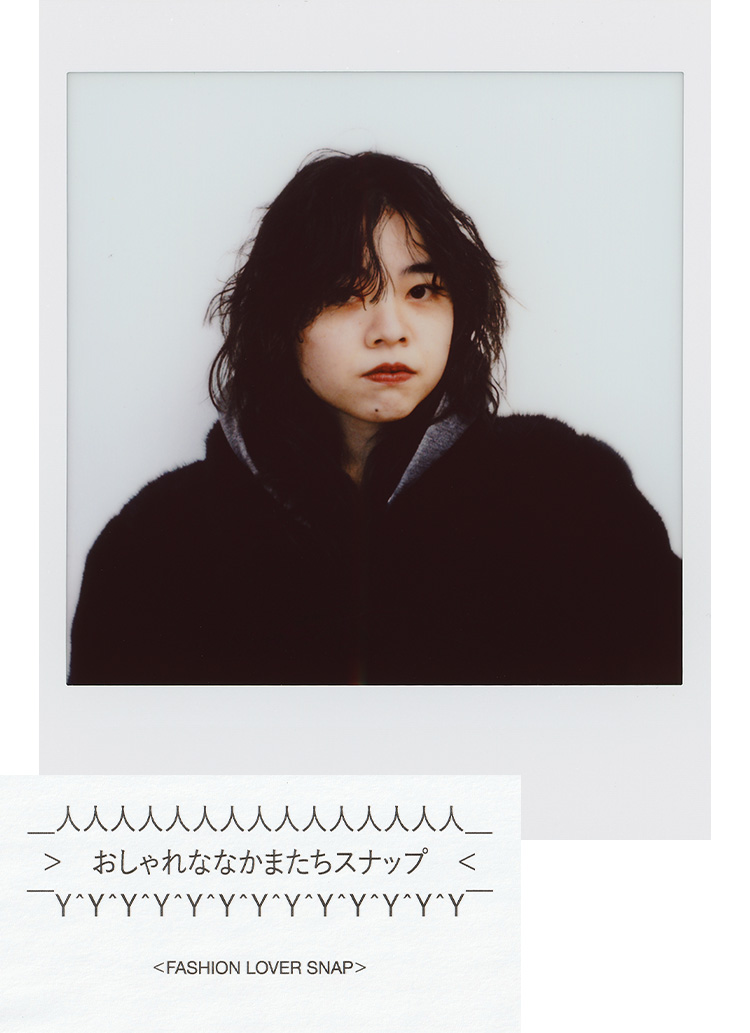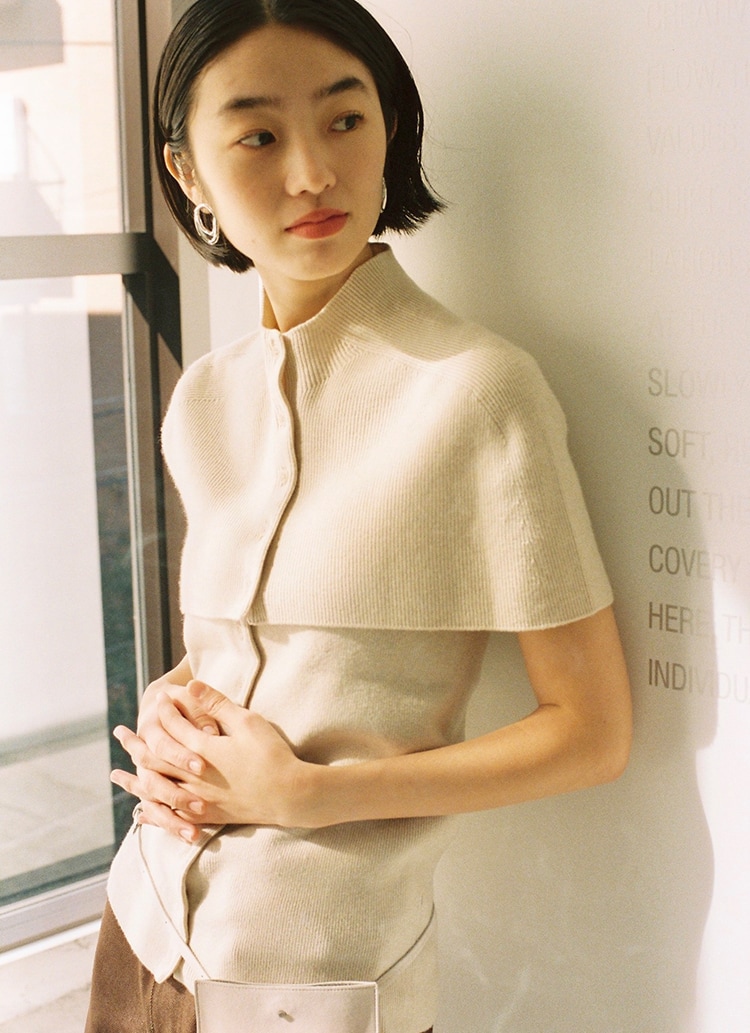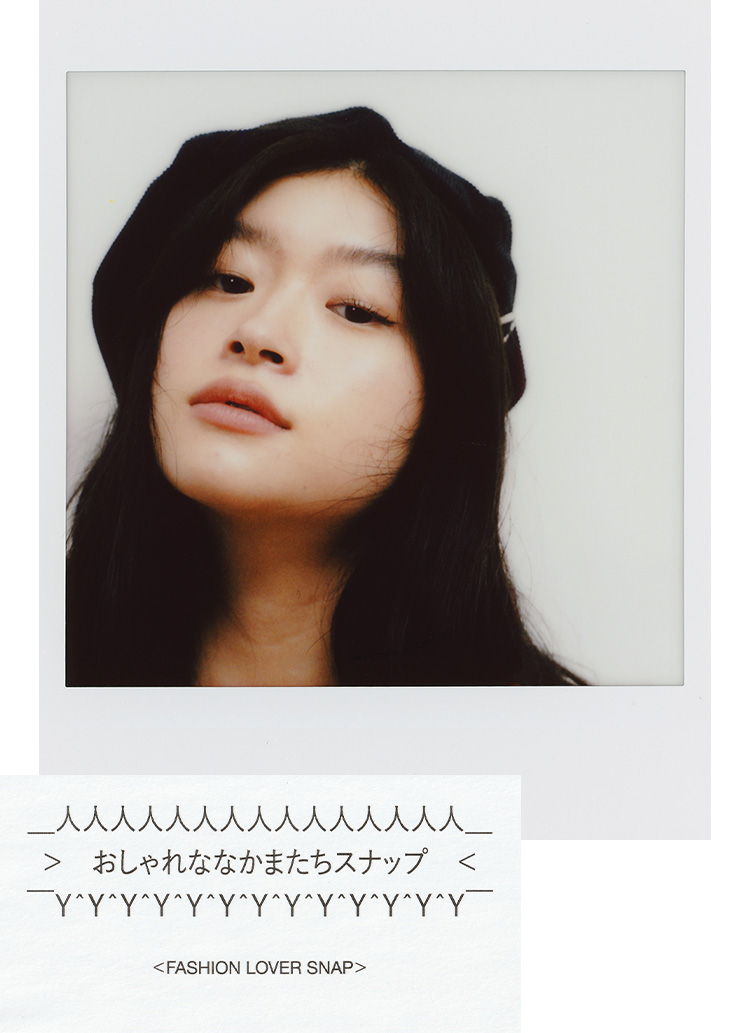I wanted to include a specific place setting in the context of fashion.

A few minutes ago, you mentioned that "Suigen no Mori Camp Land" was started as a production of Mr. Kobayashi's. .
Kobayashi:A certain person wanted to operate this place as a campground, but he didn't know how to go about it, so he consulted a building materials dealer he knew, but he didn't know that much about campgrounds. But he didn't know that much about campgrounds, so he asked a friend of mine, who in turn asked me for advice.

Mr. Kobayashi, you and your friends started a company called "CAMP CREW" together, didn't you?
Kobayashi: Yes, that's right. Strictly speaking, the campground is owned by the local government, and our company rents and directs it.

Have you ever been to Doshimura yourself, or camped here before?
Kobayashi: Before I started Mountain Research, I was invited by photographer Eichi Abe to visit a campground near here with all the modern camping gear he was originally into. Thanks to Abe, I was able to start learning about camping equipment little by little. . In short, this is where I made my camping debut.
You have camped in many places before, what are your impressions of this place?

Kobayashi: The sky is not clear (laughs). . The other thing that is impressive is that there is a river running through the bottom of the valley. Rather than having a clear view like a plateau, the trees are clumped together.
In a sense, it's like a rich natural environment.
Kobayashi: The location is cool because it is near a river and the sunlight is blocked by standing trees. . It's also a great location because it's easy to get to from Tokyo by car. There are so many campgrounds in the area that it is called the "Ginza of Campgrounds.
When the project started, I think you came here to inspect the site.
Kobayashi: Before we took care of this place, was it dormant? Kobayashi: Before we took care of this place, it was a dormant or abandoned former auto campground. Kobayashi: Before we took care of the site, it was a former auto campground, but the first thing we thought of was not to turn it into an auto campground.
Because many people fish in Doshi, many people drive their cars to the riverside. . As a result, this area is mostly auto campgrounds. . If this place is supposed to be like that, I wanted to create something that is not like that.
But when I was asked if I would like to open a campground, I realized that it would be very difficult without a car (laughs). . I knew that (laughs), but I wanted to make it work without a car. I knew that (laughs), but I wanted to make it work without a car.


. Users park their cars in the parking lot and use unicycles or electric buggies to transport their belongings to the camp site, right?
Kobayashi: I personally don't like it, camping next to cars . I think that people who like cars should use auto campgrounds, but there must be other people in the world. No matter what the means, once you come camping, everyone sleeps in a tent, right? It may be a bit extreme to say, but having a car right next to a tent, which is like a status symbol, doesn't really make sense to me, both in terms of my feelings and in terms of the picture (laughs). (Laughs.) So, camping in a place where you can't see that kind of thing and being a little bit considerate of your neighbors is a little bit of a personal preference of mine, isn't it? (It's my way of doing things.
However, the people around us complained about this so much that even the two of us who run the company together thought that an "auto campsite" would be better (laughs). (Laughs.) If you think about it, it's actually normal to have your car right next to the campsite, isn't it? So I wanted to do something different (laugh).

Kobayashi: What is happening at today's auto campgrounds... you bring a mountain of gear, unload it, set it up, take a picture after setting up, and just when you think you are settled, morning comes, and you are rushing to take it all down. When I finally arrive home, I have to take care of my tools. If you keep doing that, you will get tired and bored. So I thought, "What if there was an easier place where I didn't have to go through all that work and carry all that baggage with me? We could just show up and leave in a jiffy. Wouldn't it be nice to do that once in a while? A place where you can do an extension of balcony camping. That's what I envisioned.
In balcony camping, you set up a tent as soon as you think of it, without preparing anything, and then go inside the house to get water, food, and other goods. I wanted it to be like that. Here, we wanted people to use the clubhouse, not the house. That's why we have a full lineup of food and goods for rent.
. In the first place, camping was a sub-activity to enjoy outdoor activities such as mountain climbing, wasn't it? . But now I get the sense that camping itself has become a main activity.
Kobayashi: There is a writer I like named Thoreau, and what he always said was to keep the structure as simple as possible. The same goes for your actions, your belongings, and so on. Avoid complexity as much as possible. It is interesting to bring all kinds of things to a camp and exhibit them, but I wanted to go back to the point of keeping things simple.
That's why we decided the slogan for this campground would be "A place to think about what not to bring rather than what to bring. It's a defense against bringing a lot of things, and if you have your usual style, it's a good opportunity to think about what not to bring. I think it would be interesting to have a shift in thinking about how to keep things simple at the site...something like that.
Thinking about what not to take with you is a phrase that the writer Yoshio Tabuchi wrote in his book on backpacking, and he often said this to me. When you think about what to take with you," he said, "you start going on and on. That's a story only a gear lover could tell, and I'm no different (laughs). (Laughs.) But it is easier to think about what not to bring today. Mr. Tabuchi's counter way of thinking also applies to his life in the city center, where he is working on decluttering. I thought, "What a nice word.

You have developed your own camping base in Kawakami-mura, Nagano. Have you been able to use that experience here?
Kobayashi: Yes, that's right. I only have ideas and styles that I have acquired through my 15 years of living and working in the mountains of Nagano, and I have no certainties. I have incorporated what I found interesting in my work, and I have eliminated as much as possible what I found dangerous or frightening.
. As a rule, I only do things here that I have experimented with in the mountains. For example, bouldering, or building your own fireplace . A fire in a fire pit is fine, but it's also fun to collect stones and build a furnace by yourself. Pitching a tent on a flat lawn is also a great way to sleep inside. All of these things are things I experienced in the mountains, and I am putting them into practice here. I would be happy if people find that interesting. As I mentioned earlier, I hope that this kind of thing can be done as an extension of balcony camping.

A: You have always conveyed the appeal of the outdoors through clothing and gear, but is this the first time you have created a "place" like this and offered it to the general public?
Kobayashi: Fashion has only vague place settings. For example, there are clothes that are somewhat urban, and clothes that are somewhat travel-oriented. When I started "Mountain Research," I wanted to focus clearly on the mountains of Japan, not just "vaguely" in that way. The reason I found land and built a deck in Kawakami-mura, Nagano, was because I wanted to include a specific place in the context of fashion. This is similar. Incorporating a specific "place" into our fashion output is our raison d'etre and what makes us interesting. Even if I say so, I still love the act of fashion (laughs).
Ms. Kobayashi: For you, this facility is an extension of fashion.
Kobayashi: That's right. I felt the same way as when I started the store by the river in Nakame, that I wanted to build a store as a place to present my work. There were no clothing stores along the Meguro River at that time, but I just wanted to open a store by the Doshi River, just like here.

The word "fashion" is now being replaced by the word "style. I think there are more and more brands that want to present a style rather than a surface. Unfortunately, however, there are not many brands that are able to achieve this. Despite these times, Mr. Kobayashi is still committed to "fashion," isn't he?
Kobayashi: I will never waver on that. Because that's what I like to do . . That's why I do monkey imitations of Vivian (laughs). . of course, after understanding a lot of the essence of it, too. There may be criticism, but it's still something I like to do.
Do you want this place to function in the same way as a place of experimentation?
Kobayashi: As I mentioned at the beginning, we are currently doing this while renting someone else's place, but we would like to encroach on it little by little and eventually make it completely our own landscape. I think it will take some time. Clothes can be changed every six months, but when it comes to a place like this, it takes at least a year or two to settle down after a change. . I've realized that in the mountains, and I'm going to take my time and think about it.
However, it is not us but the visitors who make them fit in. When the ground is dug up, the rocks are scraped away, and the cabin is worn out, it finally looks like it has been acclimated to its new surroundings. The way it fits in is very important, and it is important to know who came to the cabin and how they used it.
In a way, that's one aspect of why we didn't make it an auto campground, so we are filtering out people who think it's easy to put their cars on the side of the road. If you are not someone who enjoys camping even if it is a bit of a hassle, then this would not be a comfortable place for you. If we don't do that, we can't guarantee our quality. The reason I mentioned earlier about not bringing a lot of gear is also a good reason to come with just one or two people and spend time quietly, wondering if they will be all right with so little baggage. I hope that they will cherish the opportunity to come alone and spend time in privacy, wondering if they will be okay with the small amount of luggage they have. If my idea goes the way I want it to, I am sure it will be a good thing in a couple of years.
I'm sure there was a lot you wanted to include, but do you still have room for more?
Kobayashi: Yes, there is, and I am currently researching saunas. Jumping into the river after a sauna is something that could not be done in Nagano (laughs). (Laughs) . We want people to feel comfortable, so we are now thinking that it would be a good idea to throw in such ideas whenever they are born.



